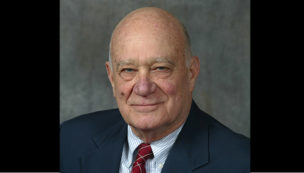If we view the November 2018 elections in terms of a tennis match, it looks like Democrats are heading for straight sets’ triumph, concluding up with a triple match point.
The trifecta of victories will control the House, along with significant gains in governorships and state legislatures.
With this “blue wave” surging, one might wonder why it may not include a 4th dimension, taking the Senate where Democrats need only a net gain of two.
Here, the math works against the challengers because while Democrats are defending 26 seats, the Republicans only have eight Senate seats to hold.
Only one of those (Nevada) is a state that voted against Trump in 2016.
However, 11 of the Democratic incumbents are women, the most females ever to so compete in Senate history. As they defend their seats, they will energize women voters throughout the nation.
The rising female power will return them to office and will have ripple effects for increased turn-outs in races for the House, governorships and state legislatures.
Throughout American history, only 51 women have ever served in the U.S. Senate, 34 Democrats and 17 Republicans.
Should new Democratic female challengers flip Republican seats in Nevada (Judy Rosen) and Arizona (Kysten Sinema) all-time highs will be reached for gender inclusion in the Senate; that huge Democratic dominance will be further extended.
Another key voting variable for 2018 will be age demographics.
The election of 2018 is likely to draw the highest participation by millennials in an off-presidential year in our nation’s history. Young people don’t like Donald Trump.
The 18 to 29 contingent played a huge role in Obama’s nomination in 2008 (at that time, my analysis showed he could only have defeated Clinton for the nomination with overwhelming youth support).
In Obama’s presidential elections of 2012, but especially in 2008, millennials had their highest rates of participation ever.
However, their voting sharply declined in 2010 (when the far-right “Tea Party” won huge victories), and, again in 2014 (when the GOP recaptured the Senate and took control of naming life-time judges – the most under-reported story of the past year).
The most recent mid-term of 2014 illustrates what can – and will – be changed in 2018. Four years ago, only 16% of 18-29-year-olds voted compared to 55 percent of citizens over age 60.
The fundamental factor is that the youth contingent has almost as many available voters as older Americans.
The “Boomer” generation totals about 75 million, and the Millennials are nearing that number.
Most dramatic, while 10,000 people, turn 65 every day (causing many LI cardiologist to stop taking additional patients!), 12,000 Americans turn 18 every day. And, they are hugely different in politics and values than elders over 65 (who have voted Republican In every national election since 2000).
Last week, Tim Kreider wrote: “Revolutions have always been driven by the young.”
Many people have been impressed by the passion and eloquence of the Parkland High School students who are speaking truth to the power of elected officials, challenging them to show less profile and more courage.
Can a youth movement, initiated by high school students, be sustained; can it expand? The short answer is “Yes” because as Americans beyond their teens rally to these exceptional youngsters the results will be synergistic.
Kreider says: “It‘s been thrilling to watch furious, cleareyed teenagers shame and vilify soul-dead politicians and lobbyists for complicity in the murders of their friends.”
NRA leaders and supporters are becoming frightened and alarmed as their leader, LaPierre, is being analogized to Dr. Strangelove.
Fox commentators and others on the far-right have been spreading “Fake News” that the high school activists are trained, paid actors, not authentic citizens.
But, “as soon as the first N.R.A. A-rated congressman loses an election,” Kreider predicts, “other politicians’ deeply held convictions about Second Amendment rights will start rapidly evolving.”
Youth momentum is gaining daily support.
This past week, New York Times columnist Ross Douthat said that he once favored extending the vote to 16-year olds.
But now, he modifies that view to “Demeny voting,” which would give extra votes to parents for their children.
Just days ago, Temple psychology professor, Lawrence Steinberg, issued a clarion call to legalize voting for 16-year olds.
He argues this is warranted because “Studies of cold cognition have shown that the skills necessary to make informed decisions are firmly in place by 16.”
Steinberg contends there is also a powerful civic argument for the vote at 16 “in addition to the scientific case for lowering the voting age.”
More than a dozen nations already grant the suffrage to 16-year olds.
Look for an expanding youth vote as localities, states, and, then, the national government offer support.
Bolstered by the Parkland students, multitudes will join Steinberg’s praise for them: “They offer an inspiring example of thoughtful, eloquent protest.”



